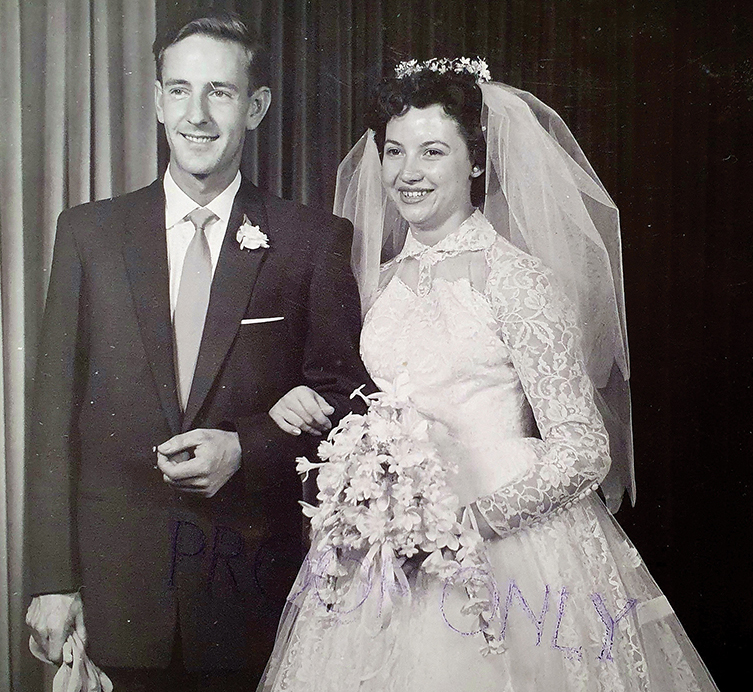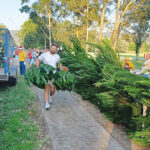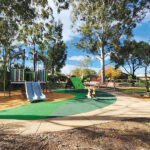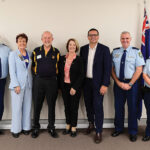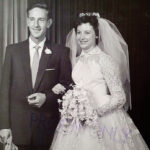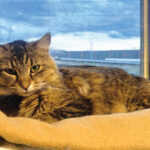Peter & Margaret – Wedding.
CITY of Penrith RSL sub-Branch member Peter Pirret is among an ever-diminishing number of surviving Korean War veterans and the only survivor still attending meetings and gatherings at the local Club.
Born in 1931 in Merrylands as the youngest of six children, Peter attended Merrylands West PS and Parramatta Marist Brothers HS, the latter during World War 2.
He describes his school life as ‘not good’ as family life was disrupted with two of his older brothers away serving during the war.
Peter left school early to work in the Kellyville district on Dairy Farms, including one named Parklea. He also owned his own horse and would often ride in gymkhanas in the Kellyville district.
After working for a time in a grocery store in Castle Hill, he went to a sheet metal shop in Merrylands and decided to pursue a trade certificate as a sheet metal worker through the Australian Army.

Prior to enlistment, Peter was an avid motorcycle racer, competing from 1950 at Bathurst (250cc Lightweight Velocette (MOV), Wallacia (250cc Triumph) and Blacktown (250cc Velocette).
He enlisted at the age of 22 and went to Kapooka for training, before being posted to Ingleburn as an Infantryman, rather than his requested trade. Peter was sent to Iwakuni (Japan) for further training before going on to Korea with 3 Battalion to relieve 1 Battalion. He was initially assigned to guard duty in Ebisu, Tokyo before later re-joining 3 Battalion to serve out his Army service.
When the ceasefire was announced, Peter was part of a force which remained in South Korea. He didn’t see combat during his time overseas, but had been very fortunate on one occasion to find his way safely out of a minefield during a patrol.
He was repatriated to Australia on family grounds when his mother’s failing eyesight left her incapacitated and was stationed at the Royal Australian Electrical Mechanical Engineers (RAEME) at Moorebank.
In 1961, he was one of many returned servicemen, including World War 2 veterans, to be retrenched from active service and discharged due to lack of available jobs within the Army. Despite those reasons from the Army, Peter continued to work at RAEME as a civilian and also returned to motorcycle racing, competing in the annual Easter meeting at Bathurst and also at Mt Druitt (both on a 500cc Triumph), Bathurst again on a 500cc Ariel and 350cc BSA (his best bike), then buying a factory race bike, a 1938 KTT Velocette, which had a ‘worked’ motor and gearbox, and had been raced in the legendary Isle of Man TT. He would race the Velocette at both Oran Park and Bathurst, finishing fourth at both tracks in his two last competitive races.
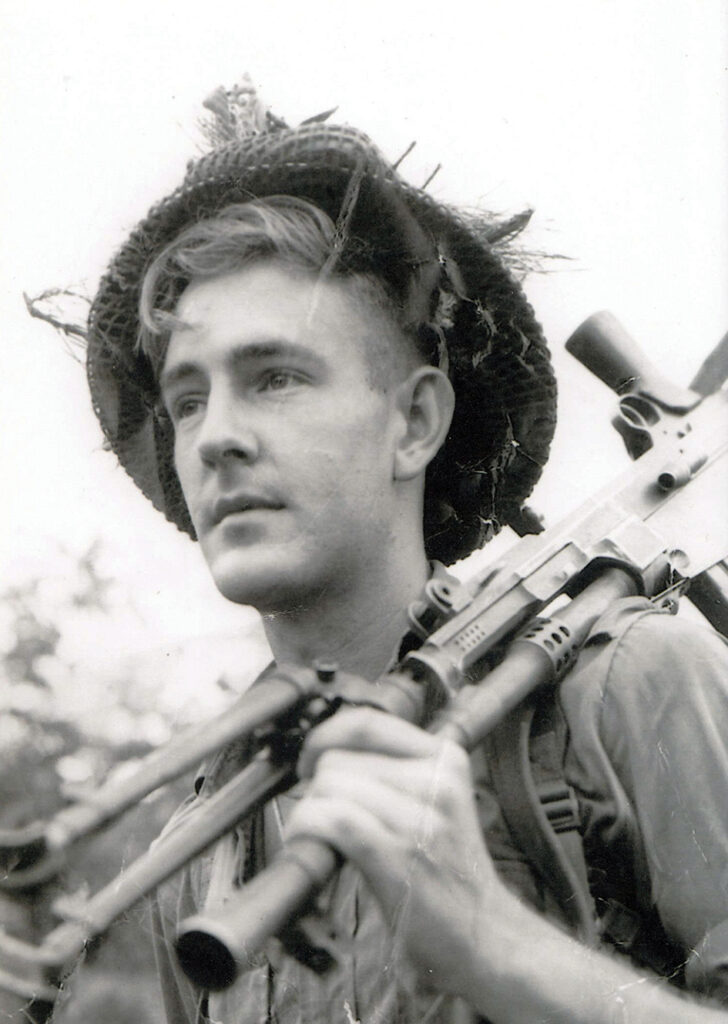
Family responsibilities and finances would curtail his racing career and he concentrated on work commitments, including working as a foreman at a factory in Seven Hills, then as a travelling salesman for formwork (10 years), before branching out in his own successful business, supplying formwork and scaffolding, and managing a staff of ten employees.
The recession would subsequently bite into the business and Peter retired.
During his Army life, Peter had met future wife Margaret at Toowoon Bay and the couple were married in 1959. They have two children (Kym and Scott), seven grandchildren and seven great-grandchildren.

Peter joined Fairfield RSL and despite having served overseas, was not allowed by RSL NSW to join the sub-Branch, only join as an Associate member. However, whilst RSL NSW did not recognise his service, the Australian Government undertook its responsibilities to service personnel more appropriately. Peter was therefore eligible for both a War Service home loan and Department of Veteran Affairs medical coverage. When the family later moved to Cranebrook and Peter joined the Penrith RSL, he was immediately accepted as a member of the City of Penrith RSL sub-Branch.
The sub-Branch members meet every Wednesday morning at the Penrith RSL for coffee, a chat and a welfare check and Peter was delighted to be recently presented with a cake for his 94th birthday.
FOOTNOTE: Australia entered the Korean War in response to the United Nations’ call for assistance, following North Korea’s invasion of South Korea in June 1950. Approximately 17,000 Australians served in the conflict, with many being stationed at bases in Japan, including Iwakuni.
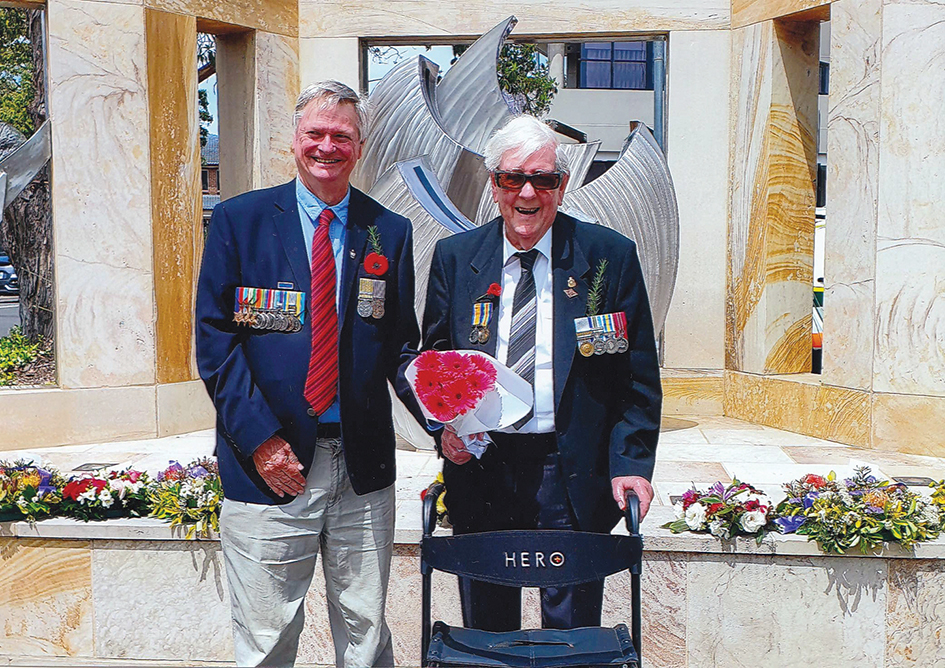
The use of Japanese bases, such as Iwakuni, was critical for the United Nations Command (UNC), as it provided a logistical hub close to the Korean Peninsula. This allowed for rapid deployment and support of military operations during the war.
Iwakuni was the key base for the Australian Army during the Korean War, facilitating air operations, logistical support and medical evacuations, thereby playing a vital role in Australia’s military efforts in the conflict.
The Third Battalion Royal Australian Regiment, also a part of BCOF, was based at Hiro, not far from Kure, which held the Commonwealth headquarters. Kure was also the conduit through which Commonwealth forces replenished from their home countries. Reinforcements arrived there to be forwarded to Korea and troops returning home by sea left from there.
Peter Pirret was nominated as a Legend of the Nepean by Bob Oscar.
If you know a local legend, send us a nomination at nepeannews@aol.com

